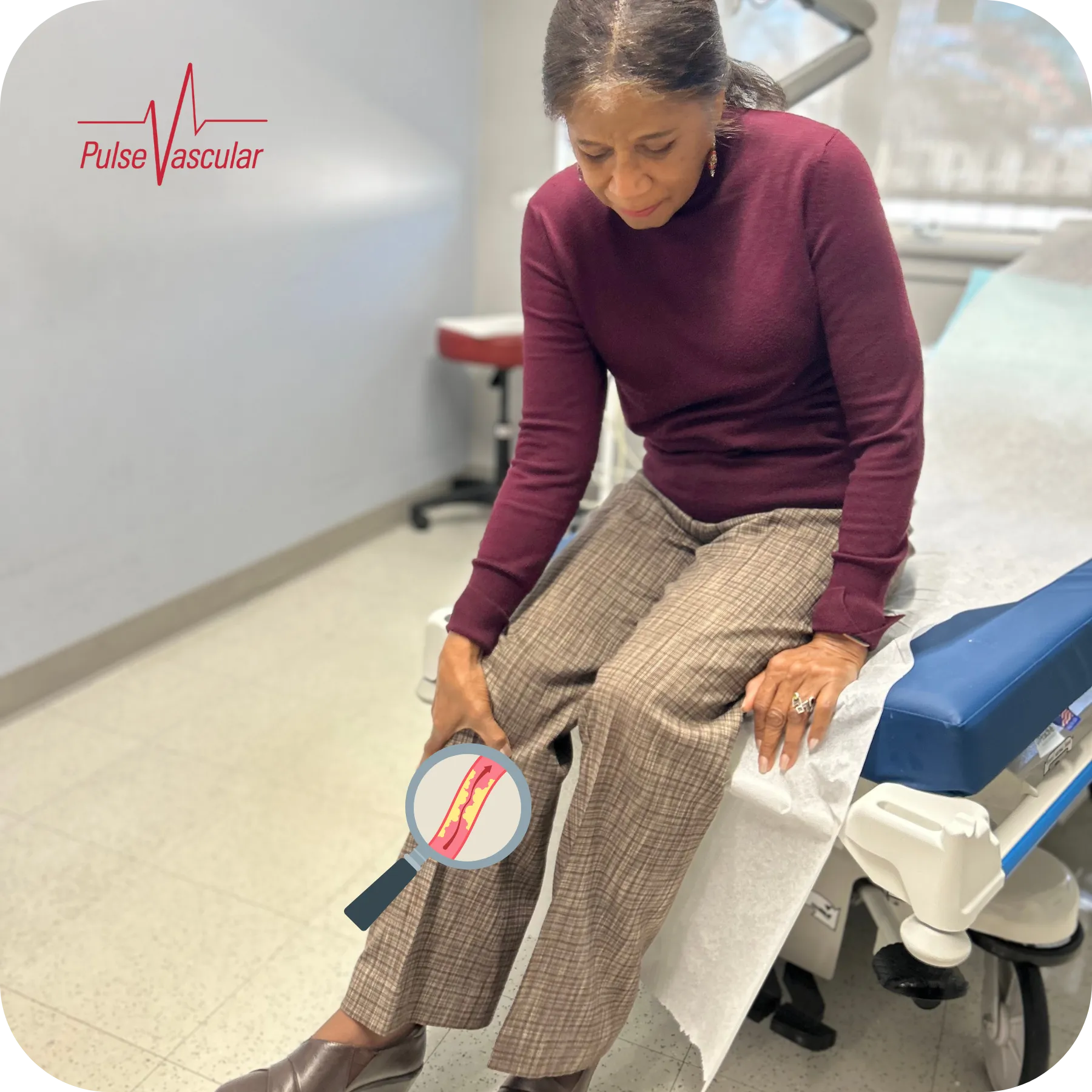
Peripheral Arterial Disease (PAD) remains significantly underdiagnosed in women, due to a combination of biological, clinical, and systemic factors.
Top 5 Reasons for Underdiagnosis of PAD in Women
There are many reasons contributing to the underdiagnosis of peripheral arterial disease (PAD) in women. These include:
- Estrogen protection: The protective effects of estrogen in the development of plaque. It has been recognized that after menopause progression of plaque formation “catches up” to men at a similar age over the 5 to 10 years after menopause.
- Atypical symptoms: Women present with atypical symptoms and their complaints tend to be less specific, particularly if they have a sedentary lifestyle.
- Delayed recognition: There is delayed recognition of PAD in women compared to men historically. Cardiovascular disease treatments have been historically more focused on men than women.
- Less agressive testing: Women are less likely to be referred for further vascular evaluation than men.
- Comorbid Conditions: Comorbidities such as diabetes, COPD and hypertension are commonly treated less aggressively in women. All women who have a history of diabetes, smoking, hypertension or a family history of PAD should be screened for the presence of treatable disease.
“A significant gender disparity exists in cardiovascular disease treatment, with men being the primary focus.” – American Heart Association
Long Term Health Consequences of PAD for Women
- Increase Risk of Cardiovascular Events: Underdiagnosis of PAD in women leads to an increased risk of cardiovascular events including heart attacks, strokes and complications of untreated PAD which can result in limb loss.
- Greater Functional Decline and Higher Amputation Rates: Women in general have smaller blood vessels than men therefore minor changes in the size of the blood vessel will have a more dramatic effect in women than in men and should be carefully monitored and treated accordingly. Underdiagnosis in women can lead to a higher rate of amputation because of their inherently small blood vessels compared to men
- Early Dementia: PAD is linked to vascular dementia, cognitive decline and may be more prevalent in women than men because of vessel size and late diagnosis. Early detection and careful monitoring are the cornerstones of treatment and prevention.

Improving Diagnosis and Outcomes of PAD in Women
- Education: Awareness and education are key factors and early detection, monitoring and treatment.
- Routine Screening: Women with risk factors such as diabetes, hypertension and smoking should have an evaluation with testing.
- Treatment Approaches: Once the diagnosis is established treatment options are similar to men in that addressing lifestyle changes and using medication when necessary.
At Pulse Vascular early detection and monitoring is available through evaluation and painless noninvasive testing. In this way, the complications of underdiagnosed conditions leading to PAD, heart attack and stroke can be avoided.
